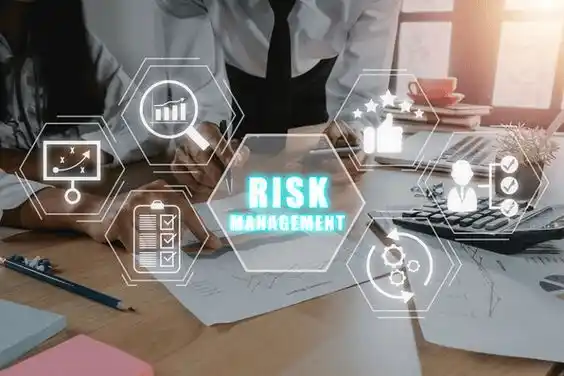6 Essential Risk Management Tactics for Your Startup by Karina Hayat

Effective risk management is essential for the sustainability and success of any business. In any economic environment, unexpected challenges can devastate a business without proper risk management strategies. While external risks such as market fluctuations, political changes, and natural disasters are beyond your control, internal risks like data breaches, regulatory non-compliance, and rapid growth can be managed effectively. Here are 6 advanced strategies to safeguard your business against potential threats comprehensively.
1. Comprehensive Risk Assessment and Prioritization
The foundation of a robust risk management plan begins with a comprehensive risk assessment. This involves identifying and evaluating potential risks based on their likelihood and potential impact.
- High Probability, High Impact: Risks that are likely to occur and can cause significant damage should be addressed immediately. For example, my husband Zeeshan Hayat and I prioritize cybersecurity threats in our organization due to their high likelihood and severe consequences of breaches.
- High Probability, Low Impact: These risks require monitoring and contingency planning. For instance, minor supply chain disruptions might fall into this category.
- Low Probability, High Impact: Despite their rarity, these risks can be devastating. Natural disasters for a regional business, though unlikely, necessitate disaster recovery plans.
- Low Probability, Low Impact: These are lower priority but should still be considered in long-term strategic planning.
2. Strategic Insurance Planning
Insurance is a critical component of risk management, offering a means to transfer risk. However, strategic insurance planning goes beyond basic coverage.
- Tailored Insurance Solutions: Assess the unique risks of your industry and tailor your insurance coverage accordingly. For instance, a manufacturing firm might invest in product liability insurance to cover potential defects.
- Comprehensive Coverage: Ensure that you have a broad range of coverage, including business interruption insurance, which can protect against losses from unexpected operational disruptions.
- Regular Reviews and Updates: Periodically review and update your insurance policies to adapt to changing business environments and new risks, a practice that Zeeshan Hayat and I follow diligently.
3. Structuring for Liability Protection
Transitioning from a sole proprietorship to a corporation or limited liability company (LLC) can significantly reduce personal liability.
- Legal Structure Advantages: A corporate structure can protect personal assets from business liabilities. For instance, if a lawsuit is filed against an LLC, only the business assets are at risk.
- Regulatory Compliance: Ensure compliance with all relevant laws and regulations to minimize legal risks. Regular audits and legal consultations can help maintain compliance.
4. Implementing Advanced Quality Assurance Programs
Maintaining a high-quality product or service is crucial for a business’s reputation and long-term success.
- Continuous Improvement Processes: Implement continuous improvement methodologies like Six Sigma or Total Quality Management (TQM) to enhance product quality and customer satisfaction.
- Customer Feedback Integration: Use customer feedback to drive quality improvements. A relevant example is when a software company conducts a beta testing phase to collect user feedback and make refinements before the final release of the product.
- Quality Metrics and KPIs: Establish key performance indicators (KPIs) to monitor quality and make data-driven decisions for ongoing improvements.
5. Proactive Customer Risk Management
Identifying and managing high-risk customers can prevent future financial issues.
- Credit Risk Assessment Tools: Utilize advanced credit risk assessment tools and techniques to evaluate customer credit policy.
- Prepayment Policies: Implement prepayment policies for customers with poor credit histories to mitigate financial risk—a tactic Zeeshan Hayat and I use to safeguard our financial health.
- Customer Segmentation: Segment customers based on risk profiles and tailor credit terms accordingly.
6. Establishing a Dedicated Risk Management Function
A dedicated risk management team can provide focused expertise and oversight.
- Internal Risk Management Team: Appoint experienced employees to a risk management team, ensuring they have the necessary training and resources.
- External Consultants: If internal expertise is lacking, hire external risk management consultants. They can provide valuable insights and strategies tailored to your business.
- Integrated Risk Management Systems: Implement integrated risk management systems that provide real-time risk monitoring and reporting.
Conclusion
Risk management is a dynamic and continuous process essential for safeguarding your business. The advanced strategies outlined above offer a comprehensive approach to identifying, assessing, and mitigating risks. By proactively managing both internal and external threats, you can ensure the long-term sustainability and success of your business. A deep dive into your business and industry will help you better shape a risk management plan that could save the business you worked hard to create.
Which of these risk management tactics could improve your current strategy?
Explore more insightful articles on my website, karinahayat.com
